This Tomato Sauce Canning Recipe makes it easy to capture that fresh, bold flavor so you can enjoy it all year round. If you’re looking for a streamlined way to preserve your garden haul or just want a versatile base for countless meals, this recipe has you covered. With simple steps and a water bath canning method, you’ll soon have jars of delicious sauce ready for spaghetti nights, pizza-making, or warming soups.
Benefits of Canning Your Tomato Sauce
Homemade tomato sauce is not only a delicious addition to various meals but also a nutritious option. Tomatoes, the primary ingredient, are rich in vitamins C and K, potassium, and folate. They contain antioxidants like lycopene, which has been linked to reduced risk of heart disease and cancer. This homemade tomato sauce canning recipe allows for control over ingredients, reducing the need for preservatives and excess sodium often found in store-bought versions.
There’s no denying the ease of having jars of ready-made sauce. If you’re making pizza, lasagna, or a quick marinara, you’ll appreciate the convenience of homemade tomato sauce without all the prep work.
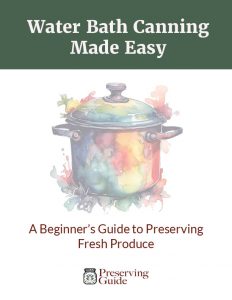
Water Bath Canning Made Easy
Preserve the flavors of your favorite fruits and vegetables with my FREE comprehensive and beginner-friendly Water Bath canning eBook.
Essential Equipment and Ingredients for Canning Tomato Sauce
When it comes to making a Tomato Sauce Recipe for Canning, having the right tools and ingredients is key. They ensure the process is not only smooth but also safe and effective.
Canning Equipment
This canning tomato sauce recipe requires specific tools that simplify the process and keep everything safe. Here is a listing of the canning equipment I used in this recipe:
-
- KitchenAid Stand Mixer
- KitchenAid Fruit and Vegetable Strainer or Food Mill
- Oster Electric Roaster
- 1/2 pint Canning Ladle
- Water Bath Canner
- Large stainless steel pot
- Jar Lifter
- Knife
- Cutting Board
- Slotted Spoon
- Water Bath Canning Rack
- Funnel
- Jar Lifter
- De-bubbler and Headspace Measurer
- Quart or Pint Sized Canning Jars
- Regular or wide-mouth canning lids (depending on what jars you are using)
- Regular or wide-mouth canning rings (depending on what jars you are using)
Selecting the Best Tomatoes for Canning
Not all tomatoes are created equal when it comes to canning. You’ll want varieties that are meaty with less juice to reduce cooking time. If you grow tomatoes like I do, it’s exciting to have options! I plant a mix of cherry tomatoes, slicing varieties, and paste tomatoes. For sauce, though, my go-to choices are Amish Paste and San Marzano Lungo #2.
Why these? They’re perfect because they contain fewer seeds and less juice, making them easier to cook down. Roma or plum tomatoes are also excellent alternatives for canning purposes.
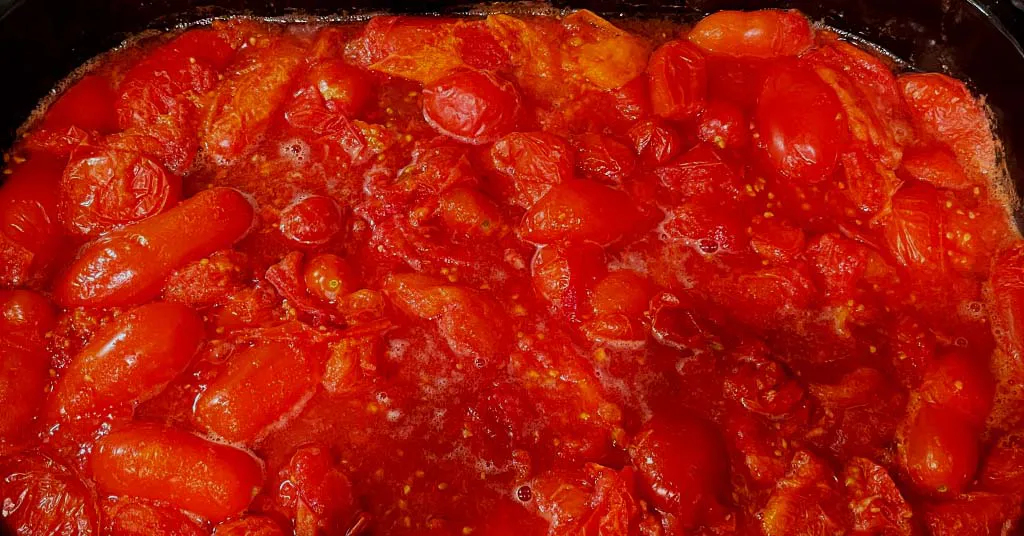
Ingredients for Canning Tomato Sauce
Once you have your tools and tomatoes ready, it’s time to gather the ingredients. For each quart jar of this simple, classic sauce, you’ll only need the following:
- 5 lbs Tomatoes, Cored (For each quart jar of thin sauce you’ll need about 5 lbs of tomatoes)
- Bottled Lemon Juice or Citric Acid
- Salt (Optional)
- Dried Herbs (Optional)
Amount of Tomatoes Needed to Make 1 Quart of Sauce
Here’s a fun heads-up: it takes more tomatoes than you think to make just one quart of sauce. About 5 lbs of fresh tomatoes cook down to a quart of thin sauce. I personally love a thicker sauce, so I usually double (or triple!) the amount of tomatoes for my batches. This is where an electric roaster becomes invaluable—it’s a true workhorse for large quantities.
To process them efficiently, I break out my KitchenAid Food and Vegetable Strainer, which separates the skins and seeds in seconds. This Ball canning tomato sauce recipe is my favorite recipe to use for a Basic Tomato Sauce and it comes from the Ball Complete Book of Home Preserving.
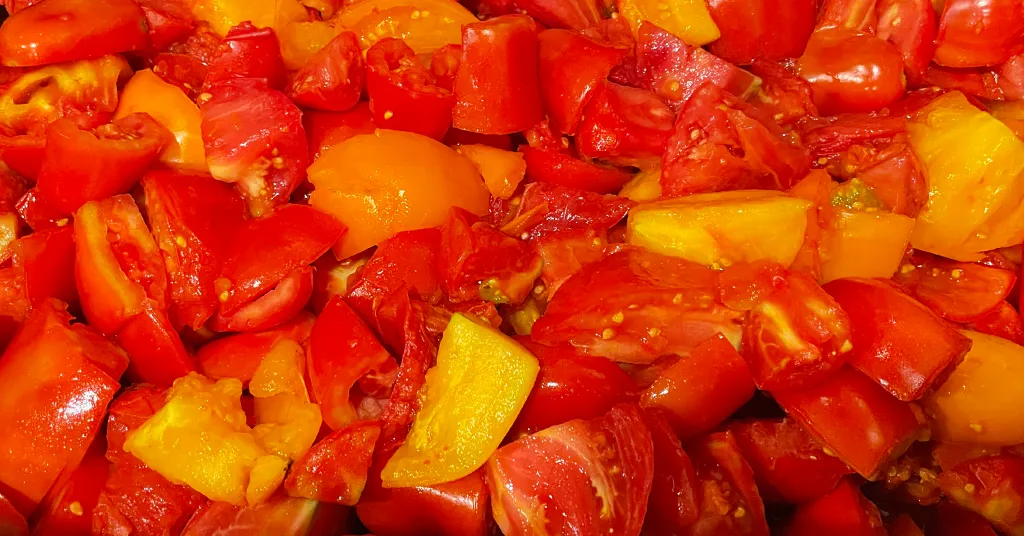
Step-by-Step Tomato Sauce Recipe for Canning
Canning your own tomato sauce allows you to preserve the rich flavor of fresh tomatoes for months to come. It’s a process that may seem daunting, but breaking it down makes it approachable for beginners and enjoyable for seasoned canners. Follow these detailed water bath canning tomato sauce recipe steps to create a pantry staple that’s as versatile as it is delicious.
Preparing the Tomatoes
-
Wash and sort tomatoes, removing any bad or bruised spots. Quarter 6 tomatoes and place in a large stainless steel saucepan or electric roaster. I utilize an electric roaster because when I make sauce I do it in very large batches. Bring to a boil over medium-high heat. Crush the tomatoes to release their juices, stirring constantly. While maintaining a boil continue to quarter tomatoes and add them to the pot or electric roaster. Continue to crush the tomatoes as you add them.
-
When all the tomatoes have been added, boil, stirring occasionally, until the tomatoes are soft and juicy. Then remove from heat.
-
Next, you are going to remove the seeds and tomato peels. Working in batches, press the tomatoes through a food mill or your KitchenAid Food and Vegetable Strainer. This will remove the seeds and tomato peels. I usually run the discards through the Food and Vegetable Strainer a few times to ensure I am getting all the tomato pulp. You can dehydrate the tomato seeds and peels to make tomato powder which can be added to soups or sauces or you can just discard the excess.
-
Return the strained tomatoes to the saucepan or electric roaster. You are now going to reduce the tomato sauce. Bring the strained tomatoes to a boil over high heat, stirring frequently. Reduce the heat to medium-high and boil. This can take as little or as much time as you like. Reduce the volume of the sauce by a third if you like a thin sauce or continue cooking until it is reduced by half for a thicker sauce. Remember to keep stirring so it doesn’t burn on the bottom.
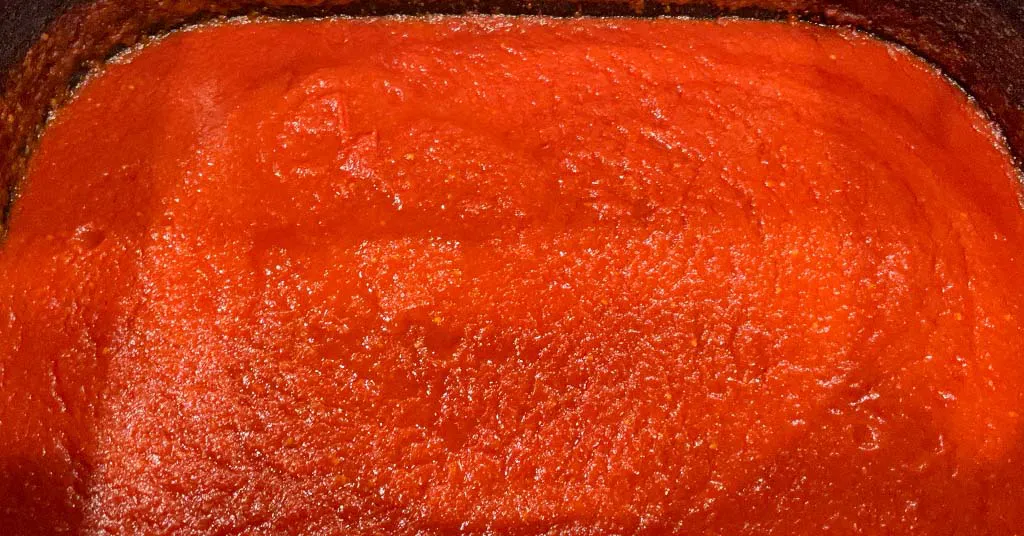
Preparing the Canner and Jars
- Clean jars and lids with warm soapy water. Ensure the jars do not have any chips or bubbles in the glass.
-
When you feel your sauce is getting close to the thickness you like for sauce. Put your water bath canner on your stove. Add your canning rack to your water bath canner. Add your pint jars or quart jars to the water bath canner. They will warm as you heat the water. Add enough water to cover jars with at least 2-3 inches of water. Bring to a low boil and allow the jars to heat up.
-
Remove your jars from the water bath canner one at a time using your jar lifter. Dump the water out of the jar into your water bath canner to ensure there is still 2-3 inches of water above your jars.
Canning Your Sauce Safely
-
Before adding tomato sauce to the jar add bottled lemon juice or citric acid to the jar. If using pint jars add 1 tbsp of bottled lemon juice or ¼ tsp of Citric Acid to the jar. If using quart jars add 2 tbsp Bottled Lemon Juice or ½ tsp of Citric Acid to the jar.
-
Add salt (optional). If using pint jars add ½ tsp of salt. If using quart jars use 1 tsp of salt.
-
Add dried herbs (optional). If using pint jars add 1/2 tsp of dried herbs. If using quart jars use 1 tsp of dried herbs. You can always add more when using your sauce. Dried oregano, basil, thyme, rosemary or Italian Seasoning mixes are excellent seasonings for this sauce. I don’t usually add dried herbs to my sauce until I open a jar. This is just my preferred method as we use this sauce for many different recipes.
-
Use a funnel and ladle to add hot sauce to the prepared jar. Leave ½ inch headspace at the top of the jar. Remove air bubbles with a de-bubbler and adjust the headspace as needed by adding more sauce. Wipe the rim to ensure a good seal is made with the lid. Center the lid on the jar and screw the band down to fingertip tight.
-
Place the jar in the canner using your jar lifter. Repeat the steps until all sauce is used or all jars that fit in your canner are filled.
-
Lower the water bath canner rack into the boiling water. Ensure the jars are covered completely by 2-3 inches of water.
-
If your water is not boiling start your processing time when the water is boiling. Process pint jars for 35 minutes and quart jars for 40 minutes (make sure to adjust for your altitude). Set a timer, it makes it much easier to make sure you process for the correct time. When your timer goes off turn off the heat and remove the canner lid. Leave the jars in the water for 5 minutes.
Storing and Using Canned Tomato Sauce
- Lift your canning rack out of the water. Using your jar lifer carefully move the jars onto a wire rack or kitchen towel to allow them to cool. When moving the jars try not to tilt them to the side as this could affect the seal of the jars. Allow your jars to cool for 12-24 hours before handling.
-
Once cool, remove the canning rings from the jars. Wash your jars off to ensure no food residue on the outside of the jar from processing. Label your jar with the name of the recipe and date. This will help you remember what recipe you used to can and the date will allow you to use the oldest canned goods first.
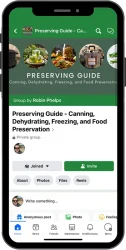
Join My Preserving Guide Facebook Group
Expert tips, tested recipes, and vibrant discussions on canning, dehydrating, freezing, and all things food preservation!
Using Frozen Tomatoes to Make Tomato Sauce
Throughout the tomato season, there is a lot of produce coming out of the garden. I sometimes don’t have time to process the tomatoes right away. Freezing tomatoes is one of the best tricks I’ve learned as a home preserver. If your garden tomatoes are ripening faster than you can process them, freezing saves the day. It’s quick, easy, and buys you the time you need until you’re ready to tackle your Tomato Sauce Recipe for Canning.
Advantages of Freezing Tomatoes Before Canning
There are several benefits to freezing tomatoes before making your sauce, and trust me, this is a game-changer during busy harvest seasons. Here’s why freezing is so handy:
-
Time-Saving Convenience: When your schedule is packed but your tomatoes are piling up, freezing provides a simple solution. You core the tomatoes, toss them into freezer bags, and you’re done until you’re ready to tackle canning.
-
Effortless Skin Removal: One of the biggest headaches in tomato processing is peeling. Freezing turns this chore into a breeze. As frozen tomatoes thaw, their skins slip off easily—all without boiling or blanching. It’s like nature’s hack for busy home preservers.
-
Minimized Food Waste: Freezing ensures no ripe tomato goes bad while you wait for a less hectic day. This method is perfect for those looking to maximize their harvest and minimize waste.
Using this simple technique ensures no tomato goes unused, giving you the flexibility to process at your own pace while preserving that vibrant summer flavor.
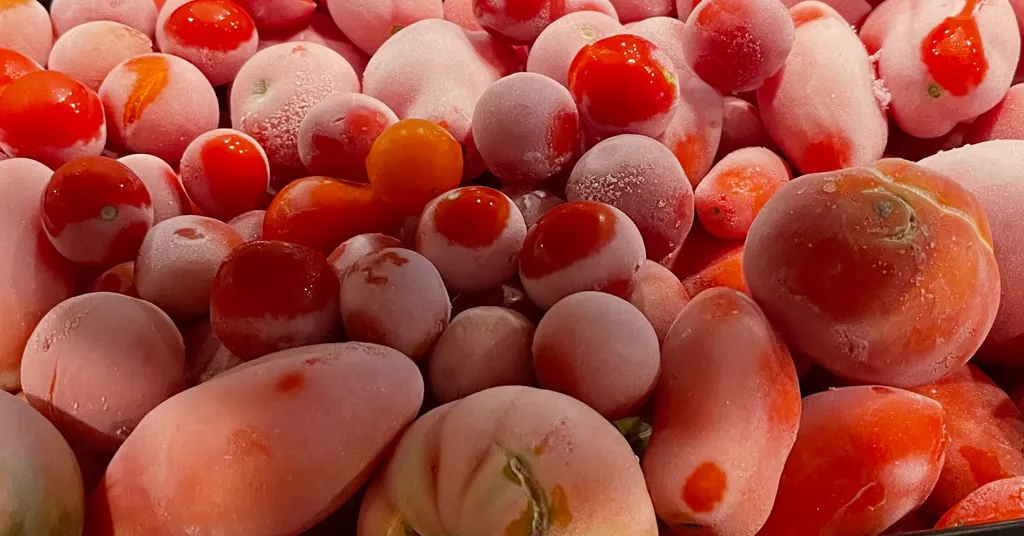
Steps for Making Tomato Sauce from Frozen Tomatoes
Making tomato sauce from frozen tomatoes is a straightforward process. Frozen tomatoes are incredibly versatile and work just as well as fresh ones. Here’s how to go from frozen to sauce:
-
Prep the Tomatoes for Freezing: Before freezing, always core your tomatoes to remove the hard stem area. It’s easier to do this before they’re frozen. Place your cored tomatoes into gallon-size freezer bags—fill them up but leave some room for expansion. Then pop them into the freezer until you’re ready to use them. Trust me, this step saves you time later.
-
Thawing the Tomatoes (Optional): You can thaw frozen tomatoes in a bowl at room temperature, but it’s not always necessary. If you do thaw them, be sure to add all the juices from the thawed tomatoes to your pot. These juices are essential to maintain the acidity necessary for safe canning.
-
Directly to the Pot: Short on time? You can skip thawing entirely. Toss your frozen tomatoes straight into a large pot or electric roaster. Add a small amount of water (just enough to cover the bottom of your pot) to prevent the tomatoes from scorching while they defrost.
-
Start Slow, Then Simmer: If you’re cooking with frozen tomatoes, begin at a low heat setting. This allows the tomatoes to warm up evenly without burning. Once they’re soft, crank up the heat and start boiling as usual—exactly as you would for a traditional canning recipe.
-
Remove Skin and Seeds: Continue to follow the directions above to remove the skin and seeds using the food mill and process the tomato sauce the same as above.
Freezing tomatoes gives you much-needed flexibility during peak harvest. It’s one of those simple tricks that turn a chaotic season into a manageable process. With frozen tomatoes, making delicious sauces becomes a year-round possibility, and you’re always one step closer to a stocked pantry.
Basic Tomato Sauce
There are so many great canning options for tomatoes.
Recipe Card
Canning Tomato Sauce
Equipment
- Large stainless steel pot or Electric Roaster
- Electric Roaster or Large Stainless Steel Pot
- Food mill or KitchenAid Food and Vegetable Strainer
- KitchenAid Food and Vegetable Strainer or Food Mill
Ingredients
- 5 lbs Tomatoes, Cored For each quart jar of thin sauce you'll need about 5 lbs of tomatoes
- Bottled Lemon Juice or Citric Acid
- Salt (Optional)
- Dried Herbs (Optional)
Want to Save this Recipe?
Instructions
- Clean jars and lids with warm soapy water. Ensure the jars do not have any chips or bubbles in the glass.
- Wash and sort tomatoes, removing any bad or bruised spots. Quarter 6 tomatoes and place in a large stainless steel saucepan or electric roaster. I utilize an electric roaster because when I make sauce I do it in very large batches. Bring to a boil over medium-high heat. Crush the tomatoes to release their juices, stirring constantly. While maintaining a boil continue to quarter tomatoes and add them to the pot or electric roaster. Continue to crush the tomatoes as you add them.5 lbs Tomatoes, Cored
- When all the tomatoes have been added, boil, stirring occasionally, until the tomatoes are soft and juicy. Then remove from heat.
- Next, you are going to remove the seeds and tomato peels. Working in batches, press the tomatoes through a food mill or your KitchenAid Food and Vegetable Strainer. This will remove the seeds and tomato peels. I usually run the discards through the Food and Vegetable Strainer a few times to ensure I am getting all the tomato pulp. You can dehydrate the tomato seeds and peels to make tomato powder which can be added to soups or sauces or you can just discard the excess.
- Return the strained tomatoes to the saucepan or electric roaster. You are now going to reduce the tomato sauce. Bring the strained tomatoes to a boil over high heat, stirring frequently. Reduce the heat to medium-high and boil. This can take as little or as much time as you like. Reduce the volume of the sauce by a third if you like a thin sauce or continue cooking until it is reduced by half for a thicker sauce. Remember to keep stirring so it doesn't burn on the bottom.
- When you feel your sauce is getting close to the thickness you like for sauce. Put your water bath canner on your stove. Add your canning rack to your water bath canner. Add your pint jars or quart jars to the water bath canner. They will warm as you heat the water. Add enough water to cover jars with at least 2-3 inches of water. Bring to a low boil and allow the jars to heat up.
- Remove your jars from the water bath canner one at a time using your jar lifter. Dump the water out of the jar into your water bath canner to ensure there is still 2-3 inches of water above your jars.
- Before adding tomato sauce to the jar add bottled lemon juice or citric acid to the jar. If using pint jars add 1 tbsp of bottled lemon juice or ¼ tsp of Citric Acid to the jar. If using quart jars add 2 tbsp Bottled Lemon Juice or ½ tsp of Citric Acid to the jar.Bottled Lemon Juice or Citric Acid
- Add salt (optional). If using pint jars add ½ tsp of salt. If using quart jars use 1 tsp of salt.Salt (Optional)
- Add dried herbs (optional). If using pint jars add 1/2 tsp of dried herbs. If using quart jars use 1 tsp of dried herbs. You can always add more when using your sauce. Dried oregano, basil, thyme, rosemary or Italian Seasoning mixes are excellent seasonings for this sauce. I don't usually add dried herbs to my sauce until I open a jar. This is just my preferred method as we use this sauce for many different recipes.Dried Herbs (Optional)
- Use a funnel and ladle to add hot sauce to the prepared jar. Leave ½ inch headspace at the top of the jar. Remove air bubbles with a de-bubbler and adjust the headspace as needed by adding more sauce. Wipe the rim to ensure a good seal is made with the lid. Center the lid on the jar and screw the band down to fingertip tight.
- Place the jar in the canner using your jar lifter. Repeat steps 7-11 until all sauce is used or all jars that fit in your canner are filled.
- Lower the water bath canner rack into the boiling water. Ensure the jars are covered completely by 2-3 inches of water.
- If your water is not boiling start your processing time when the water is boiling. Process pint jars for 35 minutes and quart jars for 40 minutes (make sure to adjust for your altitude). Set a timer, it makes it much easier to make sure you process for the correct time. When your timer goes off turn off the heat and remove the canner lid. Leave the jars in the water for 5 minutes.
- Lift your canning rack out of the water. Using your jar lifer carefully move the jars onto a wire rack or kitchen towel to allow them to cool. When moving the jars try not to tilt them to the side as this could affect the seal of the jars. Allow your jars to cool for 12-24 hours before handling.
- Once cool, remove the canning rings from the jars. Wash your jars off to ensure no food residue on the outside of the jar from processing. Label your jar with the name of the recipe and date. This will help you remember what recipe you used to can and the date will allow you to use the oldest canned goods first.
Notes
Editorial Process
At Preserving Guide, I take pride in my thorough and impartial approach to recipe and product reviews. Read my editorial process for detailsRobin
Robin Phelps has been preserving food for her family for over 20 years. Today, Robin is a full-time home preservation blogger and coach. Join Robin to learn how to easily make delicious and safe homemade preserved items.


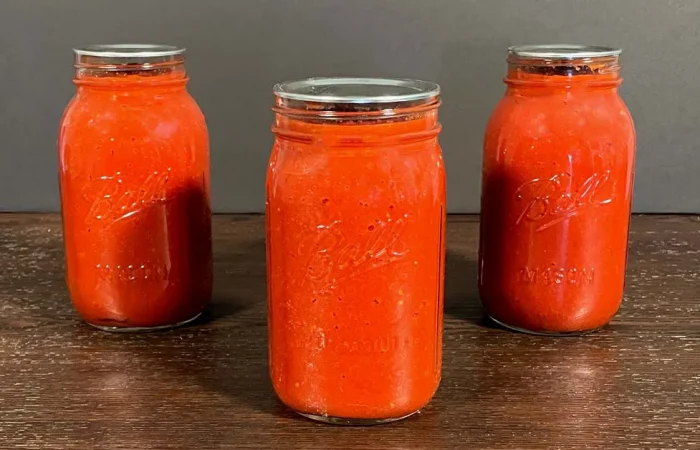
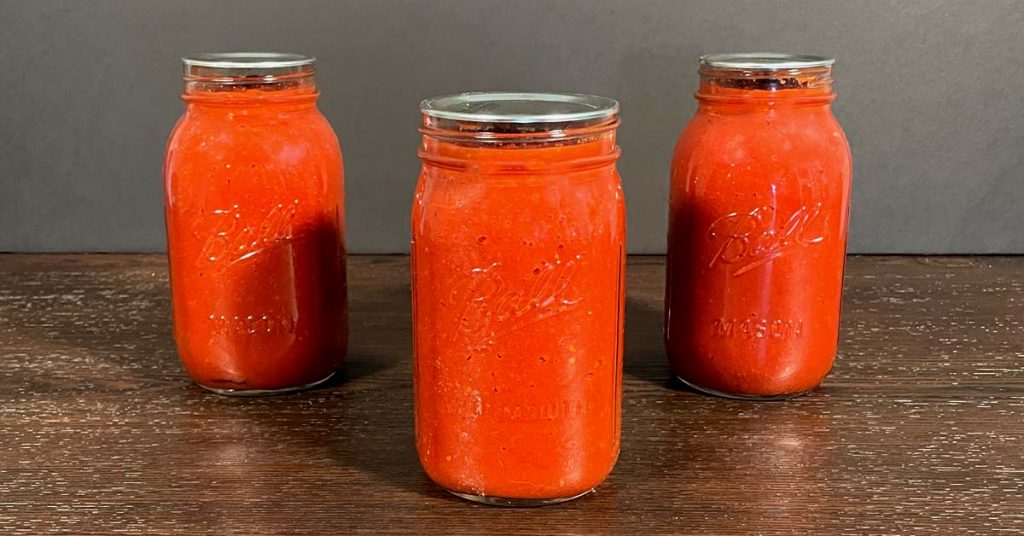
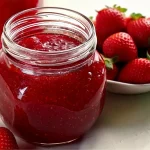

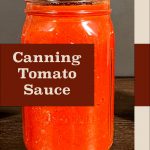
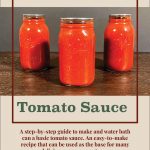
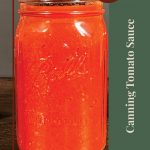
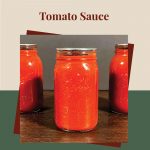
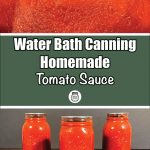
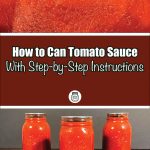
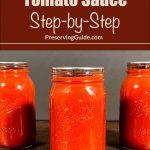
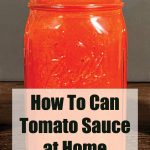
No Comment! Be the first one.